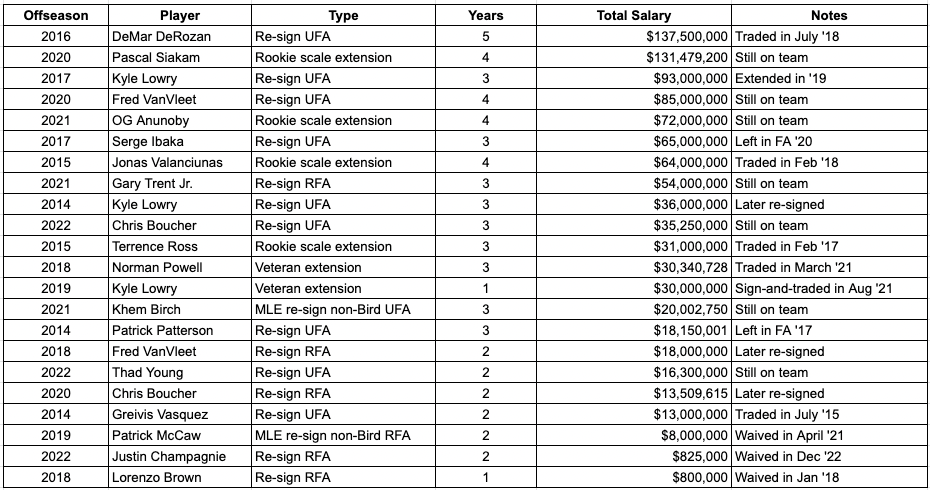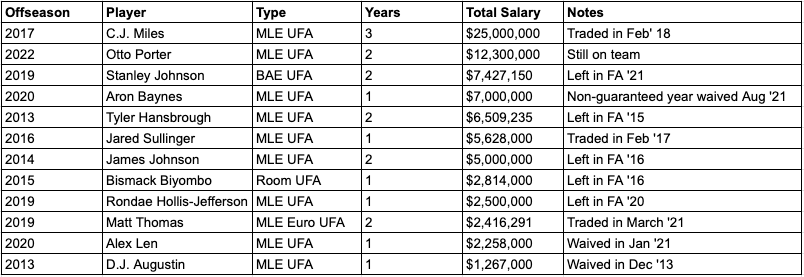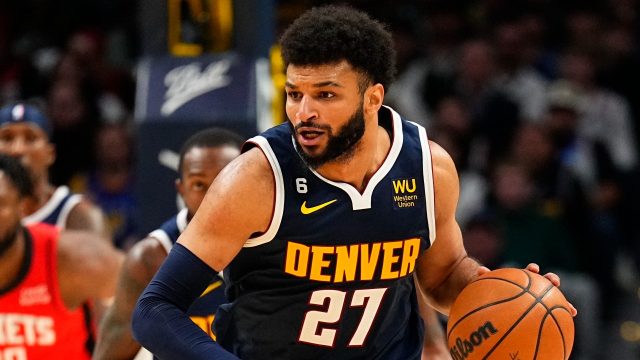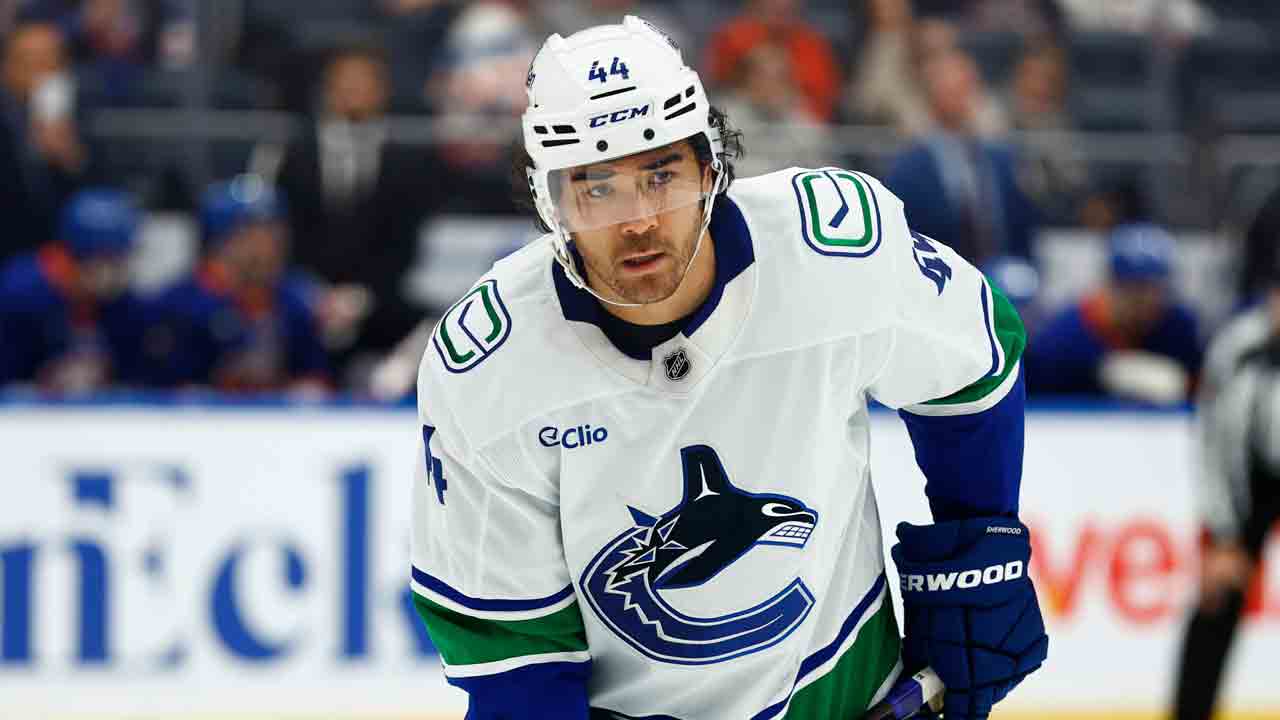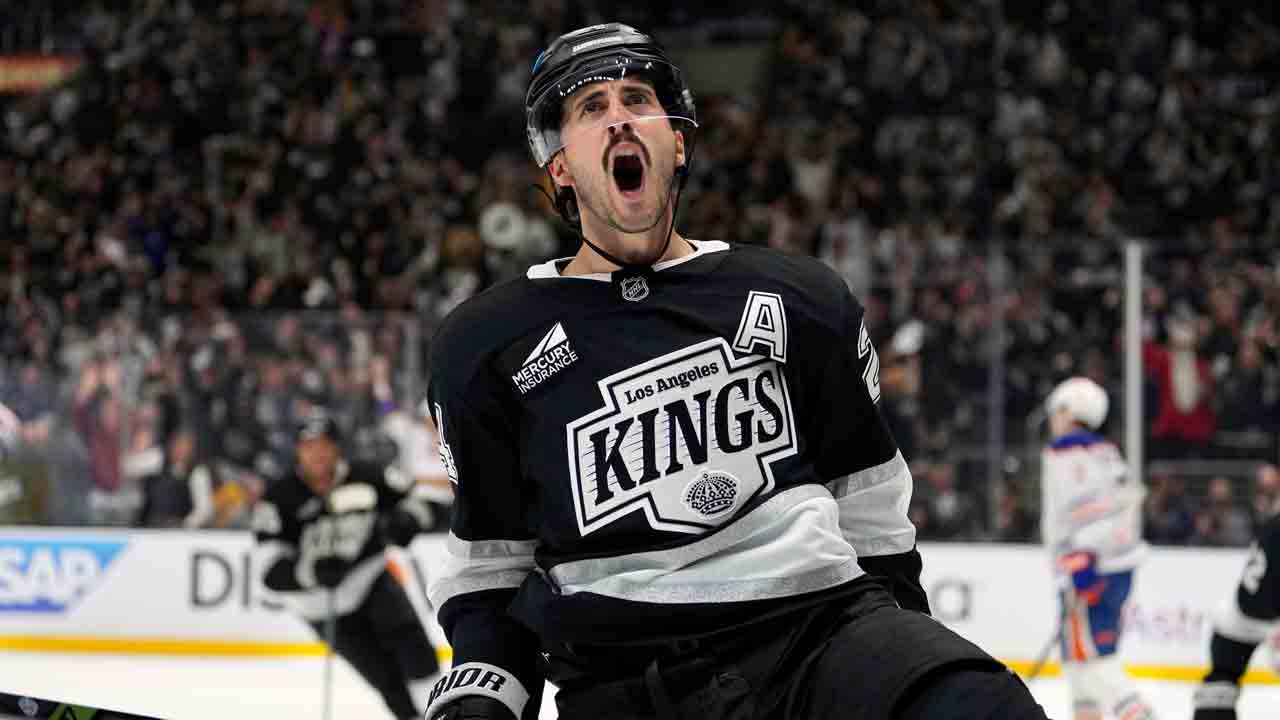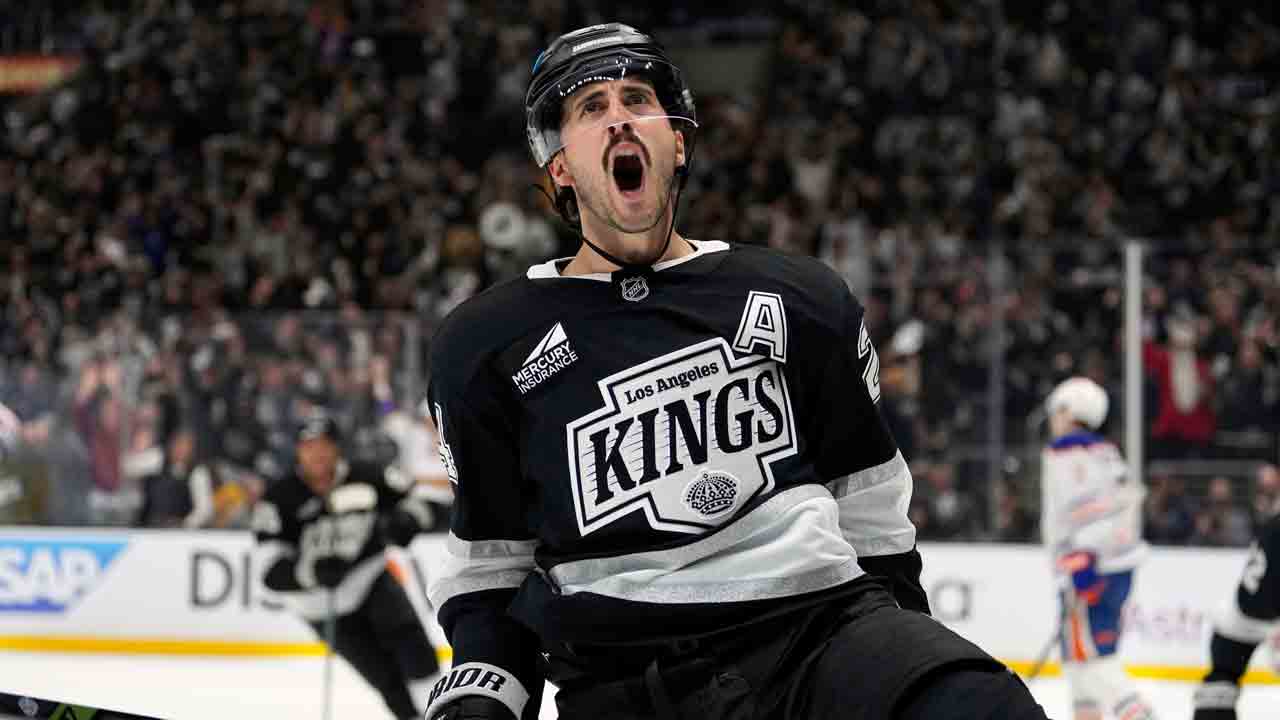
It was easy to see the logic in the Otto Porter Jr. signing.
Coming off of a championship with the Golden State Warriors, Porter had established a few things ahead of free agency: He was still a very good outside shooter, he could contribute 20 minutes to a title-calibre team, and, if managed carefully, he could stay reasonably healthy.
Two truths and a leap of faith, which, combined with Porter’s reputation as a true 3-and-D stalwart and solid veteran presence, made him an on-paper fit for a Toronto Raptors team with limited capacity to spend.
And so the Raptors gave Porter a two-year, $12.3-million contract. A guard or centre may have made more roster sense, but there weren’t obvious options for the mid-level exception, and the Raptors had recently gone down the pay-for-position road to poor effect (Aron Baynes, Alex Len). If Porter could stay healthy once again, the Raptors had another top-eight rotation piece with the versatility to figure out positions later.
If, as always, was the operative word.
Earlier this week, the Raptors announced that Porter had undergone season-ending surgery on his left foot. The first year of his contract saw him play 146 minutes.
Paying $6 million — $12.3 million if Porter goes the likely route and exercises his player option for 2023-24 — for next to nothing isn’t new to the Raptors in free agency. While the team has been a success for a decade under the stewardship of Masai Ujiri, free agency has rarely been a key part of that strategy. It’s been a successful part of the strategy even more rarely.
That framing is a bit unfair without context. Since taking over in May of 2013, Ujiri and company have had just one offseason in which they had true cap space. The NBA’s tricky soft-cap often makes it more helpful for a team to stay above the cap and use a series of exceptions to build out their roster rather than strip it down for maximum cap space.
Several times, the Raptors have opted to go the over-cap route, and several times they’ve had no other choice. That’s left them shopping in two tiers of the bargain bin most often: The mid-level exception pool, and the minimum-contract pool.
Speaking generally, the most efficient contracts in the NBA are maximum deals for stars and rookie-scale deals that deliver value before a young player reaches restricted free agency.
There are exceptions, but for the most part, the cap environment dictates that most middle-tier contracts are break-even propositions at best; you’re simply hoping to find the right player and the right fit at a fair price, not mine surplus value. And so the Raptors having cap space only once in a decade has rigged the free-agent game against themselves.
Still, the Raptors have signed 125 contracts during that time (excluding contracts for draft picks, which are almost always either for the set rookie scale or the minimum), and you’d hope for a more encouraging track record.
A few years back, I evaluated every Raptors’ front office based on their success in trades. Ujiri’s group was by far the most effective at “winning” trades. They were also better than every other Raptors’ front office save for a small-sample Rob Babcock run, though the franchise has consistently underperformed the league average dollar-per-win mark in free agency.
I updated and recategorized the Ujiri-era data following Porter’s injuries, grouping signings into four buckets.
Re-signing their own players
The Raptors take a great deal of care in developing their players and have not shied away from giving them raises commensurate with that development.
In just under 10 seasons, the Raptors have given two players veteran extensions (Kyle Lowry and Norman Powell, though Powell was a “veteran” by an odd CBA definition only), four players extensions on their rookie-scale contracts, re-signed eight of their unrestricted free agents using Bird rights, re-signed five of their restricted free agents, and used a piece of the mid-level exception to re-sign two of their free agents they did not hold Bird rights for.
It’s hard to quibble with many of those 22 deals. The most arguable is giving three guaranteed years to Khem Birch, who they’d just signed off the waiver wire and who, despite chatter at the time, was hard to see getting $20 million guaranteed elsewhere. Patrick McCaw’s two-year, $8-million contract would be the other; the dollar amount was fine in a vacuum, but there was a real opportunity cost since the Raptors didn’t have McCaw’s rights and had to use a chunk of the MLE to overpay for their own guy.
Cap space signings
The summer of 2015 was the lone time Ujiri’s group had legitimate cap space. They spent that on DeMarre Carroll, Cory Joseph and Luis Scola — a trio that played a major role in the Raptors’ first-ever trip to the Eastern Conference Finals.
The results were mixed from there. Scola left after the season for Brooklyn, then spent half a decade still dominating in international play, and finally ended with a gig as a Global Ambassador for the 2023 FIBA World Cup. Joseph remained solid but was eventually flipped to make room for C.J. Miles. Carroll dealt with injuries, and while his 5.0 win shares and 98 games are on the higher end for Raptors free agents, the Raptors had to pay a first- and a second-round pick to unload his contract in 2017.
It was still a successful offseason, just one that doesn’t exactly make the argument that the Raptors would have more success with consistent cap space.
Exception signings
Even when a team is above the salary cap, the CBA allows them to continue signing players under certain restrictions and contract types. Those exceptions are the taxpayer mid-level, the non-taxpayer mid-level, the room and the bi-annual. At most, two of those exceptions are available in a given offseason, and they can sometimes trigger a hard-cap for the year. (The specifics are beyond the scope of this piece.)
The earlier part of this era saw the Raptors hit on several of these, including a terrific Bismack Biyombo deal in that same summer of 2015. Things have gone awry since: Jared Sullinger was never healthy and eventually flipped as salary ballast, the Baynes-Len duo worked much better in theory than in practice, and splitting the mid-level across multiple players hasn’t yielded much.
Porter still has a chance to deliver in Year Two. The chart below needs it.
Minimum contracts
One of the most important aspects of how the Raptors built and sustained success has been finding and developing undervalued talent.
Fred VanVleet is the avatar for that process, but he’s not alone — Chris Boucher, Yuta Watanabe, Oshae Brissett, Terence Davis and Juancho Hernangomez have all been productive rotation pieces, whether through strong development or savvy shopping or both. The truth is that not many deals in this tier turn into much for any team, and so even finding players who stayed in the league a while longer like Alfonzo McKinnie, Malcolm Miller or Paul Watson Jr. can be considered successes.
These deals don’t cost much in money. But they do carry an opportunity cost. Any roster spot used on one player can’t be used on another, and so the less successful deals warrant examination, too. Most notably, the Raptors committed full seasons to Svi Mykhailiuk (with a player option!), Greg Stiemsma and Isaac Bonga, along with players in higher free agent tiers here that offered limited upside compared to giving a fresh shot to the next developmental project. (Full disclosure: I liked the Bonga flier at the time.)
Again, success rates should be expected to be very low in this range. The Raptors have regressed toward league average, not become terrible here.
The ones that got away
I mentioned Brissett and Watanabe earlier. Those are … not current Raptors. The Raptors invested in developing those players but moved on too quickly, watching them flourish with Indiana and Brooklyn, respectively.
Both of those players were let go due to a roster crunch. The finite number of roster spots introduces that opportunity cost mentioned, and so if a roster spot is committed to Baynes (or elsewhere) and you have to cut Brissett to keep Watanabe, and then let Watanabe walk to sign Porter (or whomever), the chance to let a good piece get away becomes larger.
This isn’t exclusive to the Raptors, either. Raptors 905 have helped a large handful of players achieve their next NBA call-up(s), rarely with the NBA Raptors.
Watson is the biggest 905-to-Raptors success story among players who weren’t already two-way players or on assignment from the Raptors. Miller, Boucher, Watanabe, and Lorenzo Brown all eventually parlayed two-way contracts into NBA deals, and Henry Ellenson at least got a 10-day look from the Raptors.
Otherwise, though, the 905 have been more useful to other NBA clubs. When the Raptors have needed reinforcements, they’ve more often gone outside of their own organization, signing 13 players from other G League teams (or the free agent pile) mid-season versus just Miller and Ellenson from the 905’s G League roster. In addition, they’ve watched nine players get call-ups to other NBA teams, often multiple times and/or for good, and watched former 905ers like Gary Payton II and Kevon Harris graduate to NBA jobs in the offseason.
Takeaways
Each individual miss in free agency, especially as you go further down the tiers, is understandable. It’s a low-efficiency play, which is why most teams that sustain long-term success do well in the draft and/or with developmental pieces. The Raptors still have a better track record than most here, but what was once a major strength has regressed significantly.
The cost of that regression has shown in the last few seasons. For the lead-up to the championship, the Raptors’ talent identification and development provided inexpensive depth with upside, trade chips and an ability to move draft capital and trust they’d still find contributing pieces.
The timing of the cold streak in those areas is exacerbated by the Raptors having fewer kicks at the can — these low-percentage gambles have fewer chances to hit. Since turning Andrew Bargnani and Greivis Vasquez into Norman Powell, O.G. Anunoby and Jakob Poeltl over a three-draft span, the Raptors have dealt four first-round picks, seven second-round picks and a number of young players in win-now moves. Flags fly forever, so those are more than justified.
The cupboard hasn’t been restocked, though, as Lowry, Powell, Marc Gasol, Serge Ibaka, Kawhi Leonard, and Danny Green — six of nine rotation players in 2018-19 — brought back Gary Trent Jr., Precious Achiuwa, Thad Young and a second-round pick that became Christian Koloko. The only other move to recoup assets was flipping Davis and Matt Thomas for seconds that became Dalano Banton (good!) and David Johnson (add him to the Jalen Harris-Dewan Hernandez pile).
The Raptors built a foundation and were able to push all-in because of their ability to find value at every margin. The inability to do so as effectively in the post-championship years has complicated the initial run-it-back decision, casting the 2023 trade deadline in an uncomfortable now-or-later light.
More on that next week.


